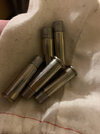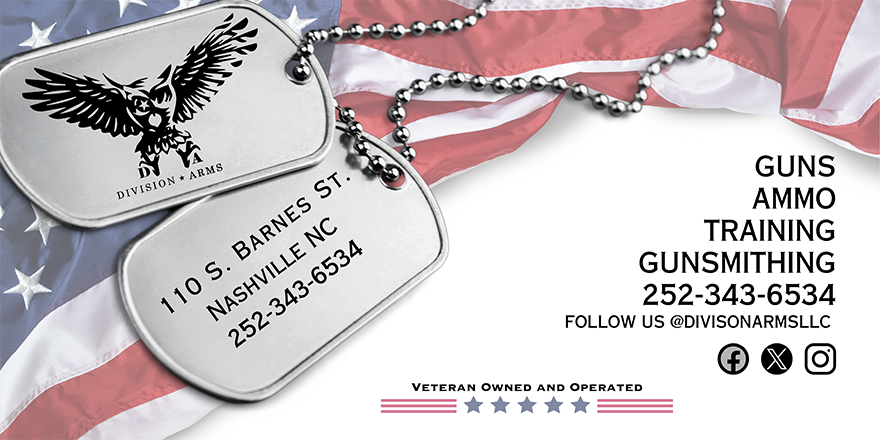This is why boxers always loose fistfights.
Practicing fist fighting doesn't really translate into a real fist fight.
that’s what the guy sitting behind Mike Tyson on the airplane thought too….
This is why boxers always loose fistfights.
Practicing fist fighting doesn't really translate into a real fist fight.
Agree. competition is not an analog to a real gun fight but it simulates the physiological effects-namely tunnel vision, increased heart rate, reduction in fine motor skills.@John Travis, I am asking this respectfully (you've forgotten more about 1911s than I will ever know): what is the basis for your belief that the "far more likely" scenario involves nighttime close-range fighting with a contact weapon?
An entangled, contact-distance shoot is as fanciful a scenario as a running gunfight. There is obviously not a whole lot of data on civilian defensive shootings, but what is there emphasizes marksmanship at reasonable distances by orders of magnitude over a backpedaling edged-weapon attack.
Tom Givens has been tracking student shootings for decades. His data set is dozens of documented civilian defensive shootings (last I heard from folks at the Rangemaster conference, the number was near 80). Most were in response to aggravated assaults or armed robberies. Contact shooting and distances above 7 yards were both extreme outliers (fewer than a handful of examples of each, though 10+ yard distances were more common than entangled gunfights). The overwhelming majority of student shootings were
- in public places (convenience stores and parking lots),
- at distances around or just over a car's length,
- involved one to three shots, and
- involved a draw to two-handed, sighted fire.
Anecdotally, nearly every shooting I was called to (civilian reported or OIS) or have worked on post-LE (with DA's offices or on civil suits) comports with Givens' data: parking lot, convenience store, workplace, or home; 3 to 10 yards; 1 to 3 rounds. I can only recall one "entangled" shooting from one of my old jobs, and that still doesn't really fit the mold. The arresting deputy NDed into his own leg wrestling the suspect (he disabled the retention hood on his holster, and he was trying to reholster while fighting), prompting my friend (his trainee, who was on the other side of the perp) to brain the suspect in response.
If the 90%+ odds are I will have to make a 3-to-10 yard shot fast (and this tracks with the distances I saw back in LE, for the times I did have to draw), then there's a 90%+ chance that accuracy and POA/POI will be relevant. My J frames can be as much as 3" off POA with the wrong bullet at 10 yards. Assuming no lucky breaks, that's enough to make a good hit bad, or a bad hit a miss.
Back in the early 80s, I picked up an LEO publication at a gun show for an article on the .41 Magnum and the Model 58.
There was another article that I found fascinating. Wish I'd kept the magazine, but like so many things, it got lost.
An Illinois state trooper pulled a stop that wound up in a parking lot. As soon as the trooper exited his vehicle, the subject hit the ground firing. Trooper took cover behind his vehicle and returned fire. According to the witnesses, he fired his revolver dry...stood up and dumped his empty brass into his right hand...made a quarter turn to the right...and was standing there looking at the ground while his assailant calmly walked up to within 10 feet and killed him.
Investigators were puzzled until one of them realized that he was looking for the bucket that he'd dropped his brass into on the practice range hundreds of times.
Don't think it can't happen. It may only take a half second to remember and correct, but a half second is a long time in a fight for life.
I was witness to one such event on a morning patrol near a place we called Dogpatch. You probably never heard of it. We came under fire, and everybody was on the ground firing back. One Marine's rifle malfunctioned...and he raised his hand. Anyone who's done their time with Uncle Sugar will understand why. As it turned out, he'd simply emptied his magazine.
Funny thing, stress.
I never said that. My point was and is to be careful of the things that you get into the habit of doing. They have a way of popping up unexpectedly.
Auditory exclusion is real. Tunnel vision is real. Time and space distortion is real. Forgetting to do the right thing can happen to anybody at any time.
First, let's refrain from snark. It's unbecoming. I don't rise to the bait.Since you have much to relay in the realm of gunfights, what training/practice regimen do you recommend?
What do you do specifically to "stay sharp"? Do you shoot on a daily basis? How many rounds do you suppose you put downrange in a given year?
I'm amendable to that so long as you refrain from assuming that everyone else is ignorant. Making assumptions about other folks without knowing them is a young man's mistake and is very unbecoming.First, let's refrain from snark. It's unbecoming. I don't rise to the bait.
Third, At one time I was burning between 50 and 60 thousand rounds a year just through my pistols, but I'm old and tired now, and I haven't fired a round in over three years. My statements are based on observations, and all I've tried to "relay" here is to be mindful of the habits that you form during your practice and competition because they can become an autoresponse.
Finally, the thing I've seen over and over on these forums is that young usually men ignore the advice coming from old men because they've been to the best schools and they've shot well in practice and in competition and they think they understand what's coming should someone hoist the Baker Flag on'em. Let me go ahead and advise you that if and when that day comes, it won't happen like you think it will.
Let the record show for the moderators that this thread went sideways without me saying how terrible J frames are….
I love discounting the input of the "young" when the young are near middle-aged and have specific experience that rebuts a favorite myth. I'm not a 20-something who took a few classes. No one here is.
I realize that there are people who will not change their minds because they know what they know, they haven't died after decades, and that's proof enough that their wary beliefs about competition are "right." That's fine. This being a discussion forum, let's discuss it on the merits instead of simply putting out an authoritative statement, walking it back as a belief, and claiming all disagreement is out of naivete.
Combat sports are beneficial for everyone* that carries a gun for work or defense. That is an opinion. It is not an unprovable fact. It is not natural law. However, I believe that, as far as an opinion goes, it is a "correct" opinion.
Fears of bad outcomes based on the myth of autoresponses are unfounded and misplaced. Regular competition will not make someone "unload and show clear" before reholstering. It will not make someone pocket brass, or stand frozen waiting for an audible "beep." That is an opinion based on myths and irrelevant examples. It should be challenged critically and openly. That opinion could, stated with authority on a public forum, dissuade someone from getting into the sports.
*I will caveat this: everyone does not mean everyone. We all know one or two people that are miracles of modern science... incomprehensibly, medically dumb, but somehow alive. People that cannot close a pocket knife without injury. The one recruit in every basic class that hand-cycles a semi-auto firearm every shot. At that point, we are discussing levels of competence so low that they have no relevance to anyone.
Avoidable bad outcomes arise from the failure to practice skills regularly under stress. I have seen far more problems arise from a failure to practice under stress than "bad habits" formed because of range safety protocols. I typed out specific personal examples based on fights and two different gunhandling problems I witnessed. The post got unwieldy and overlong. One example was a cop (a Marine 03XX vet from the height of GWOT) pointing his pistol at me on accident... not "swept" or "flagged," mind you, but actually pushing into me and others with his pistol to communicate during a stressful warrant service. I'm also fairly sure at least one of the fights ended with my former department's insurance carrier being notified (I was interviewed about it by IA), so I'm not going to put any specific details out.
The problems I saw were in real fights with deputies that refused to train combat sports. The problems I saw with gunhandling (safety and marksmanship) were always with deputies that did not shoot for sport... even instructors and guys on SWAT. Conversely, I experienced no autoresponse problems in real fights because of combat sports; only benefits that helped me win. I did not experience any negative "competition" reflexes with my gunhandling, not once, despite years of competition prior to hitting the road.
Experience (grabbing the tiger by the tail) is nothing without recency (regular practice) and relevance (related practice).
There is only one way to accumulate regular, relevant practice
(i) making hard shots fast,
(ii) moving safely and aggressively with a gun,
(iii) thinking with a gun (both in terms of shot confirmation at speed and solving problems like moving targets), and
(iv) objectively judging your performance against shooters (so you can develop improvement plans).
Practical competition checks all four boxes. "Training" alone, however nebulous that topic is from instructor to instructor, does not provide enough regular, repeated stress to be useful.
Back on topic: @S&Wtinkerer, there are still a few places where snubs are really nice options compared to subs and micros. I have a 340PD with 3D-printed carbon fiber boot grips... it's about 14.5 ounces loaded, fills the hand decently well, and doesn't have sharp corners that scream "gun" in a pocket or on an ankle. It doesn't weigh down a pocket in slacks. It's very tolerant of pocket lint.
Darryl Bolke (retired SOCAL SWAT cop, co-owner of Hardwired Tactical with Wayne Dobbs) does a great job explaining why someone might want to go for a less efficient, simple-to-operate snub versus other small options.
Jim Cirillo (coincidentally a snub advocate) was a big advocate of mano-a-mano pin competitions back in the day. One of his partners notably used a competition-modified Colt 1911 for stakeout squad work.
As I have said too many times...here we run all J Frames with a 230 Grain Full Wad Cutter loaded to 800 FPS...same specs as .45 230 Ball.
Somebody always asks....Isn't that hard on the gun????? THAT was never part of the equation............shoot 5 for "effect"...then load for life.

And they can be put in a green or white box! Or a paper sack or a plastic zip lock bag. We are so much more versatile than RemingtonAs I have said too many times...here we run all J Frames with a 230 Grain Full Wad Cutter loaded to 800 FPS...same specs as .45 230 Ball.
Somebody always asks....Isn't that hard on the gun????? THAT was never part of the equation............shoot 5 for "effect"...then load for life.
It would wake you up if you were on the receiving end tooBilly graciously gave me some of these last time I visited. I fired one (so I would have the 5 remaining) out of my 642; it'll wake you up.
The rest of the cylinder had cowboy loads in it. 🤪
View attachment 655298

